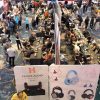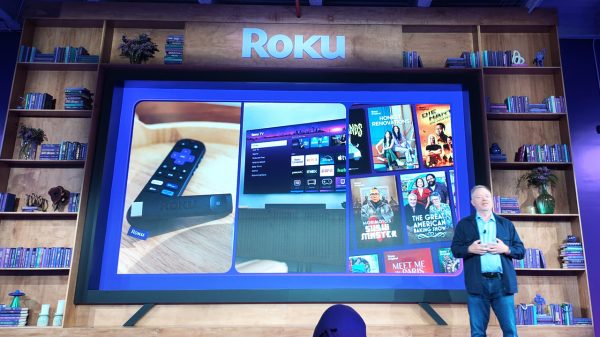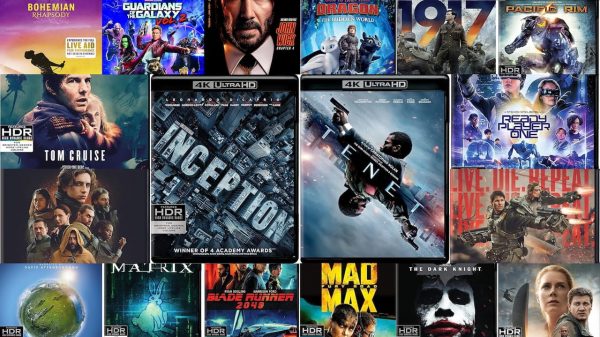All good trips come to an end, and sadly the Tohoku adventure was about to do just that. If you have read the first two parts of this travelogue already and are ready for more, read on!
If not, give Part 1 and Part 2 a look before diving in for the final leg of the northern Honshu Jazz Kissa journey.

I’ll admit to not being disappointed to leave Hirosaki, but it was sad leaving Tohoku behind after the great experiences as we worked our way north. The local train to Aomori again seemed to take forever, and then we were onto the bullet train for the 1-hour trip – about 1/3 of which was underground and under water, through the Seikan Tunnel crossing under the Tsugaru Strait – to the outskirts of Hakodate near the southern tip of Hokkaido.

I was booked for two nights in Hakodate before going on to Sapporo for my final week in Japan. Miles had a plane to catch back to Sydney on Saturday night, with a long (4.5 hours) Shinkansen ride back to Tokyo, so he would only be in town one night.
Hakodate
Hakodate is the third-largest city in Hokkaido with a population of about 240,000 (down from a peak of 320,000 in 1980). It was established in the mid-1400s and became an important trading port from the mid-1800s at the start of the Meiji restoration; there are numerous western-influenced buildings in the town as it was one of the ports that allowed foreign ships and settlement at the time.

The main area of activity of Hakodate is a narrow peninsula that stretches southwest from the mainland with a dormant volcano – Mt. Hakodate – at its tip. Hakodate is a popular tourist destination, both for Japanese and for foreign cruise ships and tour groups; there was a cruise ship docked in the port the first night we were there. The city is also an active fishing port, especially for squid.

The main tourist attraction is Mt. Hakodate, accessible by cable car or road; particularly at nighttime for its “million-dollar view.” Another attraction is the fish market just minutes away from the station and cruise ship dock, where you can find all kinds of seafood, especially sea urchin and snow crab, and squid in a myriad of forms: whole squid, body tubes, tentacles, squid ink, fresh squid, dried squid, and the list goes on.

Other attractions are a collection of old sea trade warehouses, now turned into curio shops and restaurants, and the former Goryokaku Fort, about 20 minutes away from the station area by tram and – like Yamagata and Morioka – popular in spring for cherry blossom viewing.

There wasn’t a lot going on in town record-store-wise, but we did find one place (Plus-1 AD) along the tram line between the station area (where our hotel was) and Goryokaku that looked promising. Everything else looked like shades of Fukushima (small, afterthought record corner in a something-else shop), so we took the quarter-hour walk to Plus-1 and weren’t disappointed.
While there were lots of dross compilations and unknown artists in the jazz section, there were also several choice titles and pressings, many of which I had already, but Miles is nearer the beginning of his Jazz-collecting journey than I am so we both had a great time pulling albums for him to buy, and he walked away with 8 or 10 more albums taking his total haul for the Japan trip to around 80 records.

Like Hirosaki, one of the things that struck me on our walk to the record store was the number of closed shops and abandoned buildings along the way. There was a real sense of decay and emptiness, and it was something I noticed the following days too when I walked down towards Mt. Hakodate, with bustling activity and people and well-kept businesses and shops and buildings in the tourist areas, and a ghost-town quality just blocks away from the main drags.

Even the multi-story main department store just across from the station is shut down and looks ready for either demolition or a major repurposing.
But more on that later.
Jazz Spot Leaf
Our first Hakodate Jazz Kissa stop on Friday night (after another meat-on-sticks dinner) was Jazz Spot Leaf, down a narrow side street spitting distance from our hotel (thanks Google Maps for getting us there without issues).

The front window display at Leaf features several jazz instruments and knickknacks: a foreshadowing of some of the collectibles to be found inside.

Back in the day (when smoking was more common in public spaces) Jazz Kissa used to give matchbooks to customers, and these days those matchbooks are highly collectible. Leaf had a good selection framed on one wall and a large collection of autograph cards from visiting Japanese jazz musicians on another.

The shop is not overly large, and comfortably seats about 10 or 12 when set up for record and CD listening (they switched back and forth between formats whilst we were there).

The audio system for non-live music consists of a couple of tube amplifiers with big JBLs at ear-height and Denon sources for vinyl and CD. It was nice to see another Denon DP-500M turntable here; that was the 3rd or 4th I saw on the trip which supports my decision to purchase one earlier this year.

Leaf quite obviously hosts live events frequently, with piano, bass and drums set up permanently in the area in front of the audio wall, and 6 EV monitors up high above the audio system and record storage for instrument amplification. With standing customers, they can probably squeeze in 20 or 25 for live sessions.

An interesting hosting dynamic here as the mama-san did all the work (changing records and CDs, taking orders and serving customers) while her husband rolled cigarettes, smoked, and chatted with the only other customer. Hopefully, he’s a little less sedentary when the place is busier.
Great evening out, and another Kissa to “write home about.”
Modern Jazz & Coffee J.B. House
I took it slow my last full day in Hakodate, sleeping in late and doing some laundry in the early afternoon. In the late afternoon I took a walk over to the east side of the peninsula, strolled along the shore for a bit as dusk approached, and then made my way to J.B. House at the base of Mt. Hakodate, across the street from Hakodate Park and the Hakodate Park Zoo.

J.B. House was established in 1977 (a seemingly good year for Kissa births) and takes up most of the main floor of the owner’s house. It’s an immaculate shop in a mostly residential neighborhood, about a 20-minute trek from Hakodate Station.

The space is roomy with ample distance between tables, yet has a cozy feel. In the daytime there is a lot of natural light. There is a real ‘70s vibe to the place, but the furnishings have been well cared for and are kept spotless.

Bucking tradition for a Jazz Kissa, the speakers are modern and unobtrusive: a couple of bookshelf monitors perched up high and (sacrilege) a subwoofer down low hidden under a shelf. The turntable is a beautiful old Kenwood KD-9010 direct drive model; I didn’t see what was being used for amplification or CD play. Despite the unusual speaker setup, the sound was lovely.

The master here is a Scotch lover, and this was the first kissa I’ve been to that didn’t use Japanese whisky in its highballs; I chose Glen Moray with the other option being Johnny Walker Black though he had a good variety of Scotches on the bar and I could probably have chosen something more exotic for a small upcharge).

We had a good chat about my trip to Scotland (Campbeltown and Islay) 5 years ago, and he spoke of his desire to visit someday, and his regret that he doesn’t feel he can just close shop for a time to make that happen (the joys of solopreneur-ship).

On the food side, the menu included several options for pasta or Japanese curry; being dinner time I ordered the Hayashi Rice (mild beef curry) which was delicious!

I stayed for a couple of hours and really enjoyed myself. Heard some Lee Morgan and Paul Desmond, amongst other artists, and added a couple more records to my “jazz-kissa-nostalgia-want-list.” For the first hour I was the only customer, but then a couple who had visited the zoo together came in for a bite. Am not sure if others came in after I left, or how busy they are in general, but if I were a local, I’d visit all the time.
Leaving Hakodate and Ending the Adventure
On Sunday morning I did the “tourist” thing, taking a little walk around the fish market and down to the warehouse district, near the port on the west side of the Hakodate peninsula. I’d pick up some omiyage (travel souvenirs) for my friends and mother-in-law in Sapporo and for my wife back in Calgary.

The contrast with the east side from the previous afternoon was stark, and that juxtaposition is one of the impressions that has stuck with me since I got back home a bit over a month ago.

After lunch I made my way over to the station and departed on the 4-hour train trip to Sapporo (a journey that will be cut significantly when the shinkansen extension to Sapporo is completed in a few years, though the original 2030 goal is now unlikely to be met).

The Future of Rural Jazz Kissas
I’ve thought long and hard about Jazz Kissas and Kissa culture in the time since my first Kissa experiences in 2019, and more so since this trip ended.
I’ve noted concerns about aging Kissa owners and empty shops, along with dying neighborhoods, hotels in decline and abandoned buildings. These all seem to hinge on accelerating societal changes in Japan such as the aging population, declining birthrates, stagnating wages and the hollowing out of rural communities.

In September 2024, Japan’s elderly population (over 65 years old) hit 36.25 million, or 29%, which is higher than any other nation. Fertility is around 1.25 per woman, well below the developed-country replacement rate of 2.1 children.

Wages have been stagnant in Japan for decades though job opportunities and better wages are plentiful in large urban centers, so young people move in droves to mega centers like Tokyo and Osaka, and to a lesser extent to smaller cities like Sendai and Sapporo. It’s estimated that there are 9 million akiya (abandoned homes) across Japan, meaning nearly 14% of Japanese houses sit empty, the bulk of them in rural towns and villages.
92% of Japanese people live in urban areas, and young people moving out takes away labor, spending and tax income from rural centers; 40% of rural municipalities are in danger of going bankrupt.
So, what does this mean for Jazz Kissas?

In large urban centers like Tokyo, everything will be fine. Some shops may close over time, either due to aging owners not finding someone younger to buy them out and take their place, or due to urban renewal and demolition of the buildings they’re in. Jazz Kissa are relatively popular still and there’s a good population base (and plenty of tourists) to keep them going and attract new players.

In Tohoku, a city like Sendai should have no trouble keeping Count going and could even attract new shops. There are several Jazz Kissas within an hour of central Sendai, and they should be okay too.
For smaller, somewhat remote urban centers like Yamagata and Morioka, location and profile are likely important factors in survival. In Yamagata, Octet is well known and convenient to the station, and had a steady flow of customers in the time we were there. Jazz Kohi En is less well known and convenient to access; it was quieter customer-wise and I’m not sure what will happen to it if the previous owner’s widow becomes unable to continue on her own. If that shop goes under, it’ll be a tragedy!

Similarly in Morioka, Kaiunbashi No Johnny gets great word-of-mouth support and promotion, and is conveniently close to the station. Succession may be a problem, but for now they’ll be fine. Dante on the other hand is out of the way and is already in decline – both owner health and customer numbers – and I can’t see it surviving much longer.

Yamagata still seems to have a thriving local economy, while Morioka is riding a wave of tourist popularity, both of which bode well. Hakodate fits in here too, with strong tourism to support existing business and possibly encourage new ownership when the time comes. That said, a third Hakodate Jazz Kissa I had wanted to visit, Bop, is now shuttered.

Kissas in smaller, more remote centers face a heap of trouble. Basie in Ichinoseki is in danger of closing due to ill health of an aging owner. Hirosaki’s economy is severely hollowed out and viability of any business in such a location, with declining population and minimal year-round tourism is questionable.
Nearby Aomori’s best-known Jazz Kissa, Blue Note, is randomly closed and another, Jazztime Disk, shut down in 2022.

For those interested in exploring rural Jazz Kissas, the message is do it soon; many will disappear. For Kissas in larger centers, do it soon too; though the shops will likely survive, many will move and lose their old-time charm.
I’m glad I could fit in what I did on this trip, and am now more motivated to visit some of the Tohoku Kissas I missed, perhaps in 2025. Stay tuned!
Related Reading:

















































Steelhead
December 14, 2024 at 3:48 pm
Really enjoyed reading about your travels and experiences with the Kissa culture. Kind of foreboding about the future in the remote areas of Japan but what was featured certainly looked well worth visiting. I have a high regard for big and older JBL models having owned L200’s and L300’s and know I would absolutely enjoy visiting.
Thanks for the series. Very enjoyable reading.
Happy Listening
Eric Pye
December 23, 2024 at 11:28 pm
I hope you make it there someday. I could sure go for a big ol’ JBL set someday myself.